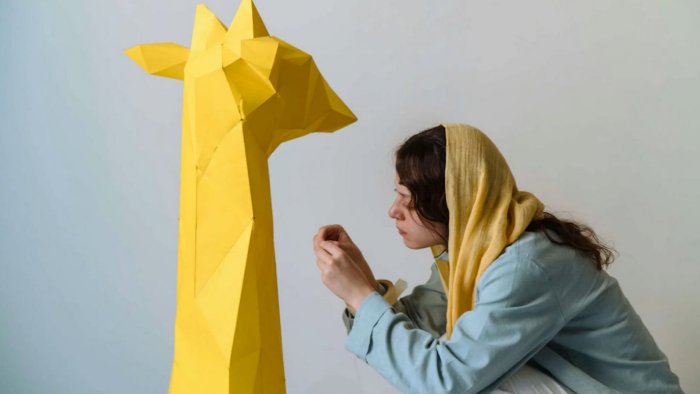Pardi di domani 2020
ilmexplorer's selection of short films of the Pardi di domani at the Festival del film Locarno 2020, curated by Ruth Baettig and Giuseppe Di Salvatore, with contributions from Laura Davis, Giuseppe Di Salvatore, Emilien Gür, Pamela Jahn, Jean Perret, Matthias Wittmann.
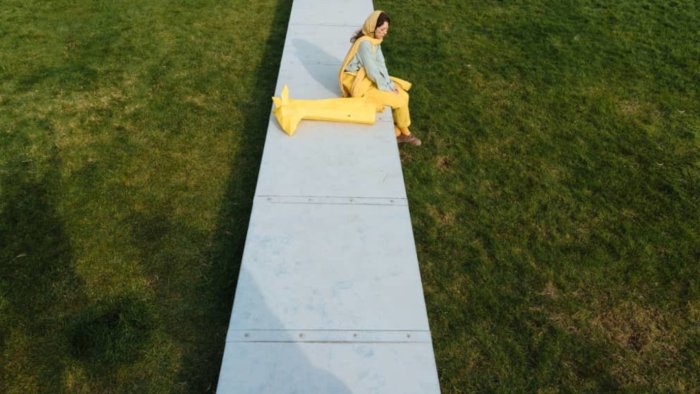
This article contains a third-party video. If you would like to watch the video, please adjust your settings.
Here, Here | Joanne Cesario | PHP 2019 | 19’ | Pardi di domani, International Competition
More Info
Torchlight down a mine. The battery is almost dead. Darkness.
Dinner is on the table and the patience of twenty two year old Koi and his mother is wearing thin. Koi does not know whether his father has survived an explosion down a mine. The image cuts to the shadows the mother and son cast on the walls. Although they say nothing the reverse shot suggests a shared grief. The mother breaks down in tears.
Here, Here follows Koi’s return home to the Batangas area of the Philippines, where land is being devastated by a foreign company for its gold. Koi begins to experience earache and so, with a friend, he journeys into the jungle to find a medicinal plant that will hopefully cure it. They compare injuries as the image switches between the “here” of their wounds to the “here” of the damaged landscape.
Koi must get some rest. In a close-up shot, he lies on his side in bed. The sounds of his surroundings start to fade, and he becomes more distanced and alienated from his home. His mother checks the inside of his ear with a torch. We notice an approximation between the sound of blood flowing through his ear and the sound of water rushing through caves. There is a perfect symmetry between the beginning and end of the film with the blocked ear passage and the mining disaster.
I find this form of storytelling very persuasive. We cannot argue with the truth that the body and the land are interdependent and when the land is subject to exploitation the local population will suffer. Cesario is a very brave filmmaker with a strong voice.
Laura Davis
This article contains a third-party video. If you would like to watch the video, please adjust your settings.
Where to Land | Sawandi Groskind | FIN 2020 | 15’ | Pardi di domani, International Competition
More Info
Sometimes there are films that develop in a short time such an opulence of unpretentious, free floating, refreshing mysteries, dissimilarities and alterities that you don't want to spoil your viewing and listening pleasure by asking questions or searching for answers. «Do you believe you can get to know another person by asking them questions?», is said at one point in the film. Can you really get to know a film by asking too many questions? What framework of identification do these questions imply? Sawandi Groskind's radically anti-identarian Where to Land (without question mark!) is so full of possible conjunctions and disjunctions that one does not actually want them to “land” and find a destination, even though everything revolves around the search for origin, for belonging and for togetherness. This search takes place in jungle of both strange and estranged, homeless images and sounds, rhythms and textures, fissures and materialities that negotiate identity as radically fluid and origin as a product of discursivity, and not of consanguinity.
This jungle could be an island near Helsinki, but it could also be the beginning of Terrence Malick's The New World, or a Robinsonade. Many images, sounds, and ellipses remind us of other films (Nouvelle Vague, Claire Denis, Lucrecia Martel, Apichatpong Weerasethakul, but that’s not so important.
We don’t know if it's a remote island or nearby. It's night. We meet a beautiful old woman in close-ups. This woman has an old-fashioned pistol. So, the film doesn't start with a girl and a gun, but with an old white-haired woman and an old pistol. Is she stranded? Or did she fall from the sky? Just as we all land somewhere, and have to get our bearings. Then a security guard at the beach demolishes her makeshift tree hut. At a rest stop in the forest she meets a young black man. They are people of different colour and age. They both seem to be looking for something. The young man likes to look at air traffic maps on the Internet, all those planes that are in the air and have not yet landed. The old woman has lost her voice. They must find a common language. What they have in common are tick bites; briefly, in one shot, a bat with a tick is seen. If there is a community, then it can only be found through transmission, parasitic conditions, contamination, hybridization, differences. At some point the old woman begins to speak, she finds her voice again, but this voice is not human at all. The strange, particularly enchanting thing in this festival context: she sounds like the leopard of the Locarno Festival. Even if they don't speak the same language – or they did at some point (Finnish?), and after a traumatic shock, the old woman has found another, animalistic language? – they understand each other, just as we understand this hypnotic, enchanting jewel of a film without understanding it.
Matthias Wittmann
This article contains a third-party video. If you would like to watch the video, please adjust your settings.
I Ran from It and Was Still in It | Darol Olu Kae | USA 2020 | 11’ | Pardi di domani, International Competition | Pardino d’oro SRG SSR for the best international short film
More Info
C’est dans l’épaisseur des premières images noir et blanc que Drol Olu Kae cherche ce qui fonderait le geste conférant aux Noirs une présence au monde de toute légitimité. Histoires de corps, tels ceux des personnes sur un trottoir esquissant des pas de danse. Le cinéaste regarde de plus près, cadre plus serré dans l’image et en ralentit le défilement. La voix d’un homme en off explicite l’évidence de ces corps en mouvements et certaines des phrases s’impriment sur l’écran. Il est question de total actions engagées avec une spontanéité à nulle autre pareille. Plus tard, un homme d’âge mûr, le père du réalisateur sans doute, danse en maillot de corps dans le faisceau d’une lumière blanche ; il est la figure fantomatique qui incarne ce que le film s’emploie à raconter sur un mode chaloupé. À la grande histoire du pays et de la cause des Noirs, avec force extraits du discours de Malcolm X prononcé à Los Angeles en 1962, I Ran from It and Was Still in It (tiré d’un poème de Fred Moton) adosse son récit diffracté par les vertus d’un montage jazzé. Celui-ci prend des accents autobiographiques qui mêlent, sur fond d’une famille désunie, le deuil, la perte, la résilience que le dernier texte du film rappelle comme une épigraphe. Si le film est de courte durée, il réunit différents temps propres à ce palimpseste où se déposent par couches brinqueballées à dessein des scènes de films de fiction, des vues anonymes, des bouts de vidéo de famille, des citations (James Baldwin, Otis O’Solomon), des musiques (les Watts Prophets, Horace Tapscott), des écritures à même l’image, des soliloques. Ainsi va la quête d’une réunification tant familiale que communautaire face aux peines et désespoirs. Le film s’essaye ainsi à réunir les éléments hétérogènes de consciences meurtries dont des éclats de vie banals d’hier et d’aujourd’hui dessinent l’état d’une conscience contemporaine. Loin du verbe mobilisateur de Macolm X des années 60, en 2020, la voix de ce film-ci est diffractée, étrangement calme, recueillie et apolitique, qui plonge à la fin, c’est la chute du film, dans la fascination de vues microscopiques énigmatiques — et au spectateur laissé à lui-même d’imaginer des fécondations (in vitro ?) salvatrices.
Jean Perret
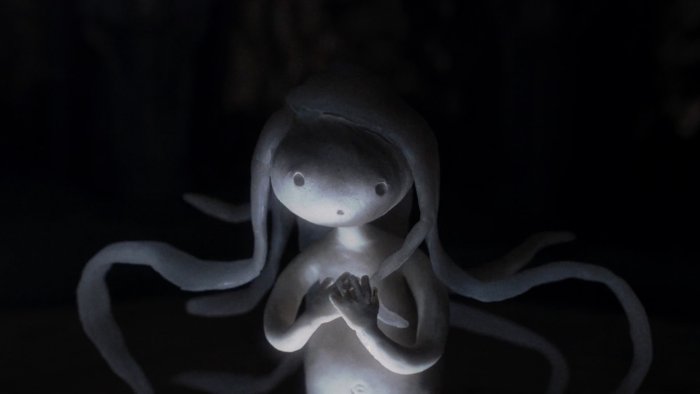
O Black Hole! | Renee Zhan | UK 2020 | 16’ | Pardi di domani, International Competition
More Info and Trailer
I have been fortunate enough to never be exposed to a black hole, but I am sure they are quite impressive. Probably less so than Renee Zhan’s film though. This sixteen minute long film is no less than a philosophical cosmogony told in an operatic form through different animation techniques, namely hand-drawn and stop-motion. The story of the universe is explained through the conflict between two female figures, Eternity and Singularity, which I do not feel confident enough to summarise. No need to say that there is something overwhelming about O Black Hole!. This highly conceptual and formally perfect film does not allow room for failure, even any slight mistake. As such, it constantly runs the risk of being trapped by its own perfection, and I sometimes asked myself if its beauty was not the boring one shared by all masterpieces good enough to be put in a museum. The most positive, yet ambiguous feeling that O Black Hole! triggered in me was something akin to the sense of the sublime: a heightened state of astonishment caused by inhuman beauty. It is a shame that I did not watch it in Locarno, where I could have had compared my emotional response to the film with the sight of Alps, which pushed Edmund Burke to write his Philosophical Inquiry into the Origins of our Ideas of the Sublime and Beautiful.
Emilien Gür
This article contains a third-party video. If you would like to watch the video, please adjust your settings.
Spotted Yellow | Baram Sarmad | IRN 2020 | 12’ | Pardi di domani, International Competition
More Info
Giraffe, girafe, giraffa (English, French, Italian) – all derive from the Arabic “zerafa”, a phonetic variant of “zarafa”, which means “charming” or “lovely one”. I read this in a book and I don’t know if the association is that common in Iran but to me it is very true in
this Iranian film.
Roya, a solitary woman who is absorbed in her own thoughts, hears the sound of the jungle while she travels through the city by bus. She spends her days dressed as a giraffe entertaining children. She is certainly very charming.
Roya has what looks like a yellow birthmark on her chin. When she entertains children, she wears a giraffe costume made up of a set of loose, plain yellow clothes and a giraffe head designed via low poly computer software. It is interesting that the clothes have no spots but she does. To me, this suggests that costume and stylization is the fabric of our identity. Roya’s performance – her huge gaping eyes, short yelps – bolster this. To me the film is about identity. If we are compassionate to other beings we can even exchange our spots with them.
What I love most about this film however is how it draws attention to the production design. The film’s colour grading balances juniper greens and buttermilk yellows, and even the clarinet arpeggios make me think of a giraffe’s head bobbing up and down as it walks the desert. It is a lovely one.
Laura Davis
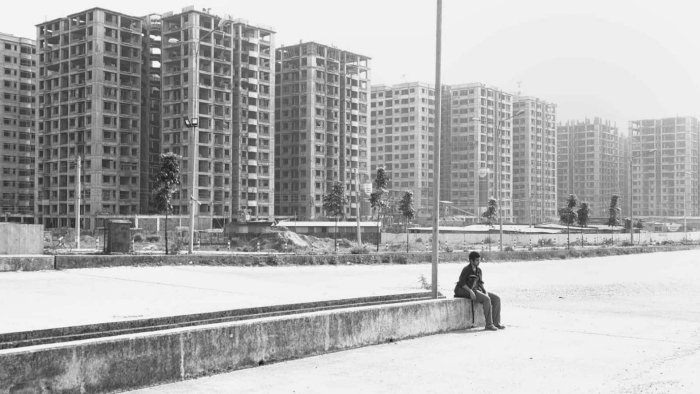
A Boring Film | Mahde Hasan | BGD 2020 | 16’ | Pardi di domani, International Competition
More Info and Trailer
I am afraid I cannot write about A Boring Film, since I do not know if have seen it or dreamt it. At best, I could evoke the very sensuous way by which it put me in a state of awakened dreaming, as I surrendered myself to its hypnotic beauty, the kind that film critics lack the tools to describe, since they are used to write about the movies they see with their eyes, while A Boring Film can only be experienced by the skin (or, more accurately, by the eyes of the skin, to quote from Finnish architect Juhani Pallasmaa). It is a film that wraps you in its thin and delicate mesh, carrying echoes of the surface of the world, while giving you the sense that, for the time of the screening, the world does not exceed the surface of the screen.
I cannot blame myself too much for my incapacity of writing about such a piece of art though. After all, most films are made by only one organ (the eye of the camera), and it is little wonder that A Boring Film was brought into being by a whole and truly multisensory body. The film is about a man looking for a place to sleep away from a noisy environment, and I believe it is a manifestation of his tired body, which recorded, by way of some magical trick, his sensations while on the verge of falling asleep. No wonder that it took me to this uncanny realm of perception where the boundary between vision and hallucination blurs.
The only way to report my experience of the film would be something akin to a dream diary. A peeling man nods off. Boredom opens the doors of perception. Balconies cast their shadows on walls. The captivating sound of timber as it is being sawed, which always restarts when you think it is about to stop. Even cats cannot find shelter from the blinding afternoon light. Buildings are springing up and out of the ground, and the sandy landscape is slowly being turned into a concrete nightmare. The character walks to the zoo in a state of near somnambulism, as if driven by some animal instinct, looking for a shelter. He forgets there the noise of the city, and it is such a deliverance that it would even be possible for him to think that the animals are free. Film is the ultimate provider of such illusions.
Emilien Gür
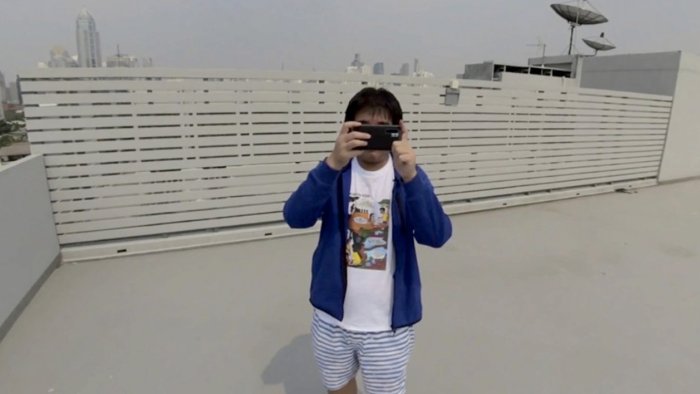
Digital Funeral: Beta Verion | Sorayos Prapapan | THA 2020 | 6’ | Pardi di domani, International Competition
More Info and Trailer
Imagine that there is a pandemic. You are alone in a stuffy, messy and confined room in Bangkok. Maybe you can just get some fresh air on the roof terrace. You feel isolated. You cough and sweat, and you worry about your (social) death, transcultural barriers and exclusion mechanisms of the global film market. You dream of organizing your own digital funeral and think about how to make it socio-physically acceptable and transculturally accessible. Above all, you want to share your (after) life, show your legacy, screen your films. How can you manage to perform a 360° camera panning for the future funeral guests; a panoramic shot that stock-takes every detail of your room, including your own body; and you are not the Savoyard officer Xavier de Maistre, who in 1794 conducted an imaginary quarantine experiment by taking an adventurous journey through his room (neither your head nor your room is so aristocratically furnished to keep up with de Maistre)? You're lucky enough to have a tripod though, a VR-360° lens system and stitching software at your disposal in order to stitch the perspectives together and calculate a pan that contains yourself.
It is this film exactly that Sorayos Prapapan has made, with understatement and self-irony, with love for formalism and its philosophical, geo-political implications. The obvious cultivation of trash, failure and imperfectionism is underpinned by a high conceptual standard that never tips over into pretentiousness. More accurately , the smartest ideas and the most creative form experiments come across as quite unobtrusive, relaxed, by the way. Right at the beginning the tripod of the camera falls over while we inhabit the panoramic perspective and we see the director moving away, on the roof terrace. We are left alone, so to speak, simply “left overs” with the technology. We are welcomed by a computer voice that quotes Bong Joon-Ho’ famous Golden Globe acceptance speech: «Once you overcome the one-inch tall barrier of subtitles, you will be introduced to so many more amazing films. The System will automatically switch to its original soundtrack shortly. Enjoy the barriers.»
While the computer voice makes us believe that the director has died, we see Prapapan sitting on the bed, heavily coughing, smoking something, and clicking a computer mouse. He may be navigating us through the very film we are about to see, since the film is shot as a VR-3D film for Head-Mounted Display, and presented to us in its 2D version. What Prapapan also satirically targets are the pathetic promises of the VR 360° reports: “teleportation”, “experience on demand”, and “first-person empathetic understanding”. The bubble of lockdown is conjoined, additionally confined by the VR bubble of digital stitching. While we are sewn into this bubble made of pre-seen perspectives, Prapapan may have left this windowless monad, mischievously knowing that his virtuoso, allegedly relaxed films can easily keep up with Jean Luc Godard's formal experiments.
Matthias Wittmann
This article contains a third-party video. If you would like to watch the video, please adjust your settings.
A Thrush Flapping its Wings Against the Wind | Alexandre Haldemann | UK 2020 | 16’ | Pardi di domani, National Competition
More Info
In his 1924 engaging essay Visible Man, Béla Balázs perceived film as the redemption of the human body, which he believed had been rendered illegible by the culture of word that developed from the discovery of printing. «Man will become visible once again», he wrote, expecting the new medium to bring about a visual culture where «the expressive surface of our bodies» would no more be reduced to just our face. Alexandre Haldemann’s daring experimental short film convokes the memory of the early film theoretician’s hopes. There is hardly any face to see in A Thrush Flapping its Wings Against the Wind. The human body is depicted through male hands and a female voice. The former chop and saw wood, and peel potatoes, while the latter speaks about her unborn child. They do not inhabit the same places, but coexist within the same fragments of space-time brought into being by the cinematic image. The mouth that utters the words we hear is far away from the hands of the man she speaks to through an unknown distance (the kind that can lead to a break up). The director invests the cinematic image with the power of bridging this gap: the body of film brings together two separated human bodies. How beautiful this oxymoron is: physical distance depicted through phenomenological copresence.
While disjointed bodies are brought together, unified bodies are fragmented. Hands become a metonymy to signify a whole human being whose story is to be read on the tattoos that cover his skin. «The back of a headless Greek torso always reveals whether the lost face was laughing or weeping – we can still see it clearly»: what Balázs wrote about Greek sculpture also applies for these hands. The fingers of the male character are enough to express his labour, hunger and sorrow. It is therefore quite a disappointment when his face is revealed. This shot betrays the spirit of the film, which was about to invent a cinematic language capable of expressing the human soul without showing any human face. Yet one should never blame an experiment for its failures. These remind us of the fragility of the experimental gesture, and thus of its beauty.
Emilien Gür
This article contains a third-party video. If you would like to watch the video, please adjust your settings.
Ecorce - Peel | Samuel Patthey, Silvain Monney | CH 2020 | 15’ | Pardi di domani, National Competition
More Info
First there is a crackle, then wooden lines followed by the stark contrast of a small black figure on a white canvas. This carefully constructed and arranged set of images is, in its essence, a collage of animated still lives that start to move on screen, sometimes in only the tiniest of detail but often to great effect. The paper drawings that come to life on the screen might, at first sight, merely illustrate the daily routine of people living and working in a retirement home, but the filmmakers Samuel Patthey and Silvain Monney have transformed their mini documentary into a meditation rather than an exploration. It’s only sound that gives the images their actual grounding in reality, a reality filled with a lot of waiting and little joy. However, where this film is most effective is in its contemplation of the relation between humanity and nature as being an organic whole, a circle, a process that is as fascinating as it is disturbing. The devil really sits in the detail here, and there is sometimes a sense of excitement as the still images start to move, to transform or to come to a halt. It’s a film that requires a little patience as life simply moves slower when you reach a certain age, and there is little exposure, conflict or drama to be found in its measured fifteen minute running time. It’s time well spent though for those who care about an art style that evokes the profound beauty of simple imagery and sound, creating an experience that goes beyond the sum of its parts.
Pamela Jahn
This article contains a third-party video. If you would like to watch the video, please adjust your settings.
Nha Mila | Denise Fernandes | PT-CH 1010 | 19’ | Pardi di domani, National Competition
More Info
Memories do not come from the past. Memories are produced by the present: through tactilities, smells, sights, hugs (currently not so common), or the sounds of voices. This is made clear by Denise Fernandes’ short fiction film Nha Mila right from the start where a woman stands on a toilet. It’s the airport toilet in Lisbon, we find out afterwards, and she has been forced to return to Cape Verde to see her dying brother. Lisbon is just a passage. The woman looks somehow self-absorbed in the mirror, fills her water bottle, then suddenly a female off-screen voice is calling out the name by which she was called as a little girl on the Cape Verde Islands. What sounds like a remembered ghost voice from the past turns out to be highly present, belonging to Águeda, a cleaning lady who convinces Salomé (former Mila) to spend the stopover at her home, with her family. The main part of the film consists of female, trans-generational memory work/talk. Much remains unspoken. Basically, the women find each other through the common language itself: Crioulo. The memory of a shared, pre-diasporic past is created from the co-presence of bodies, looks, voices, gestures, photos, and women’s dresses that say a lot about different trajectories in life. Nothing is tragic, nothing completely light-footed, sometimes the women laugh together, e.g. about the monochrome (red, yellow) clothes that were worn when they had just arrived in Lisbon. Transcultural saudade is in the air – which, by the way, stems from Arabic (sawde, the black).
The film is structured by poetic and calm long takes, which on the one hand create an atmosphere of dreamlike introversion and spatiotemporal in-betweenness, and at the same time are attentively anchored in the social reality of Lisbon, with its postcolonial class relations and social stratifications. The somnambulistic atmosphere seems remotely reminiscent of Pedro Costa's films, but Fernandes and her team have developed a different, unique style that is less sombre, less mystical, but is brighter, glittering, in its otherworldly , symbolic moments. There is only one, short flashback, and such as in Ingmar Bergman's Wild Strawberries, Salome's aged, present body is included as an invisible observer in the remembered childhood scene. She is visiting the past like the ghost that seemed to come to visit her in the toilet at the beginning of this mesmerizing, tender and precise film.
Matthias Wittmann
This article contains a third-party video. If you would like to watch the video, please adjust your settings.
History of Civilization | Zhannat Alshanova | KAZ 2020 | 15’ | Pardi di domani, International Competition | Pardino d'argento SRG SSR for an international short film
More Info
A change of place often triggers the mind to reflect on times past and the reasons that might have led to the decision to move on and, ultimately, move away. In cinema, it’s a popular concept that has been explored to a degree of exhaustion, regardless of genre, culture or context. However, despite the approach being rather obvious, it’s still exciting to see how filmmakers keep applying the concept to their stories and what it can provoke in the viewer's perception and imagination. History of Civilisation works with this idea without adding too much to any proposals for reinventing the narrative format but it’s the atmosphere, the ambiguity and an underlying subtle tension that make the film worthwhile. Perhaps its biggest fault is the need to overexplain what made the main protagonist, a high school teacher, take on a place at a language program in London to escape her life in Russia. The film manages to overcome its weakness however in dramatization and a few questionable choices in editing by creating a sense of melancholy through long close-ups and shadowy lighting compositions. There is also a club scene that works well in terms of depicting the psychological states of dislocation and disorientation, which is enhanced by the writer/director Zhannat Alshanova giving it a slightly political dimension. Ultimately though this a story of forbidden love and desire, a gentle exploration of intimacy, infused with pain, shame and compromise.
Pamela Jahn
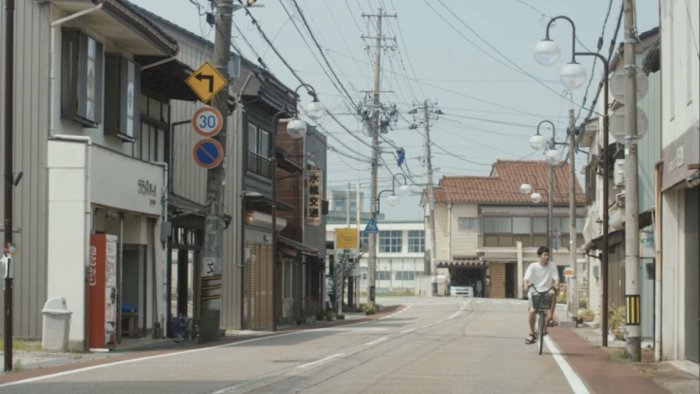
Retour à Toyama | Atsushi Hirai | FR-JAP 2020 | 24’ | Pardi di domani, International Competition
More Info
C’est l’histoire d’un fils parti en France sans la permission de son père, et qui en revient dix ans plus tard. On ne saura pas les raisons de son départ ni de son retour à Toyama, le film s’ingéniant à décrire voire à réduire au plus près des gestes quotidiens le repas avec sa mère, le bain avec son frère, la cuisine avec sa grand-mère, la rencontre avec un ancien ami, les déambulations à bicyclette, qui le conduisent sur un pont au-dessous duquel des canoéistes s’activent et devant un cinéma fermé depuis longtemps. Les plans sont fixes, parfois un panoramique, leurs durées sont aménagées au cordeau de ce récit introspectif qui veille à rester à la surface du temps quotidien, tel que le vit le personnage principal interprété par Junpei Tanaka. Chaque moment est rigoureusement tenu, la maîtrise du cadre et des équilibres de la lumière, en particulier dans les intérieurs, est impressionnante, comme le rythme du montage au découpage minimal propice à la remémoration.
Les fantômes du père ! C’est lui de dos jouant du piano électrique, le même auquel le fils s’assoit plus tard. C’est lui encore qui inspire l’un des rares plans furtifs et incisifs du film, quand un homme âgé, corpulent et nu au bain, vu de trois quarts de dos, est en train de procéder à ses ablutions. Une autre image retient l’attention, celle en gros plan du poisson décapité avec force coups de couteau administrés par la grand-mère. La saillie de cette violence qualifie d’autant la constance avec laquelle Atsushi Hirai fait barrage à toute affectation psychologique. Sa façon d’évider la mise en scène pour la rendre à l’essentiel des mouvements des corps et des mots à peine échangés ouvre chaque plan des méditations solitaires. Parfaitement de fiction, Retour à Toyama est ainsi le documentaire de ce geste cinématographique. L’ultime plan est étouffant, nonobstant l’application mise par ces quelques personnes à faire leur gymnastique matinale, observées par le revenant émergeant du sommeil (mais cette histoire n’aurait-elle été que rêvée ?) ; ces gens sont encastrés dans un paysage urbain sans horizon aucun.
Jean Perret
This article contains a third-party video. If you would like to watch the video, please adjust your settings.
The De Facto Martyr Suite | Justine de Gasquet | CH 2020 | 18’ | Pardi di domani, National Competition
More Info
Born Hadithi’s voice embodies ibn Kenyatta’s texts, which were written during his long imprisonment which began in 1974. They speak of the migration of black people to America, of their past of slavery, of their on-going discrimination. The archive footage images tell us some facts, and have an anecdotic flavour, whereas the texts tell us about a general situation, a condition. The image layer works as the support for mini-stories, whereas the sound layer assumes the burden of History. This dialectic of the particular – archive image – and the general – voice over – is something classical, almost traditional, in film documentary. Justine de Gasquet’s portrait of this charismatic figure would remain nothing more than an informative study if we did not discover another deeper dialectic between the images and the text.
Ibn Kenyatta’s reflections focus, among other topics, on the idea that black American people live in the condition of being de facto martyrs, even independently of their initiative to struggle against their discrimination. Their simple belonging to a history of oppression makes them destined to be the “witnesses” (original Greek meaning of the word “martyr”) of this history. Even the eventual benefit of being recognised as victims would become a heavy connotation that limits their free development. Ibn Kenyatta lucidly ascertains how a problem-solving attitude should be substituted by a more radical change of condition, and of the conditions, that influence the status of black American people. This is why “resistance” should be synonymous with “re-existence” – he says.
Now, this intelligent point of view on the condition of black American people shows us another dialectic between voice and images in The De Facto Martyr Suite. Insofar as the images systematically fail to present the person and inevitably show its being imprisoned within a cliché, we feel how the voice preaches exactly what the image contradicts, so proving the correctness of the criticism on the condition of black American people. Therefore, the quite traditional filmic polarity between archive footage and voice over is no longer a limit of the film, for it achieves the specific task of expressing a problematic tension between the need for re-inventing the condition of black American people and the inability of the images to overcome the traditional clichés about them. The standard form of Justine de Gasquet’s film so becomes an unexpected brilliant choice.
Giuseppe Di Salvatore
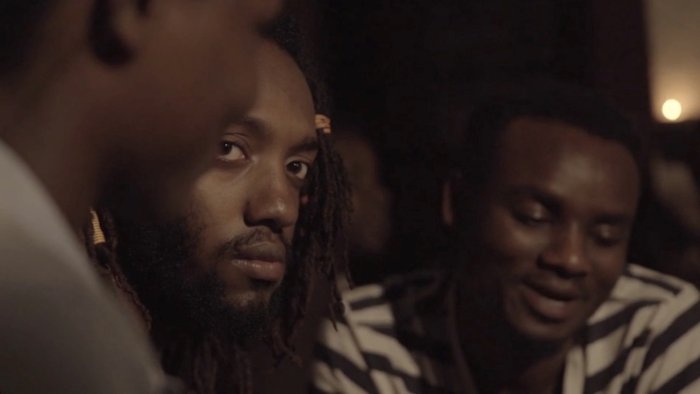
Fish Bowl | Emmanuel Ngabo | RWA 2020| 14’ | Pardi di domani, International Competition
More Info
Fish Bowl est produit par Samuel Ishimwe Karemangingo et Philbert Aimé Mbabazi, qui travaillent également en qualité de cinéastes à la progressive affirmation d’une cinématographie au Rwanda. L’un et l’autre ont suivi des études au Département Cinéma / cinéma du réel de la Haute École d’Art et de Design de Genève. Le titre de ce film est la métaphore à peine voilée de l’environnement confiné dans lequel évolue le personnage principal du film, à la manière d’un petit poisson dans un aquarium. Artiste pour le moins réservé, Emmanuel fait l’objet d’attentions, qui sont autant de contraintes imposées par les rituels sociaux, les us et coutumes de la communauté, les lois d’une culture à maints égards coercitive. Sa mère est décédée, le deuil réunit les familles, les amis, les chants mortuaires font leur œuvre. Son oncle l’invite à devenir adulte et à couper ses dreadlocks, tout en lui glissant une petite somme d’argent dans la main. Mais le film tisse salutairement deux récits en une subtile critique de l’événement. Si Emmanuel est étrangement absent des égards qui lui sont témoignés, replié sur lui-même en une espèce de pudeur attristée, il n’en développe pas moins une attirance sensuelle pour Amanda, une jeune femme occupée à servir les boissons aux personnes assemblées. Ils vont discrètement échanger leurs premiers baisers sur fond d’une chanson qui se démarque des chants des femmes du deuil. L’expression de leur désir a un caractère dissident alors qu’un prédicateur prépare la cérémonie de l’enterrement et invite à partager un chant religieux. La mise en scène des personnages, tous interprétés par des amateurs, est d’une roborative efficacité, à l’image de la chute du film faite d’un champ et contre champ des amoureux : leurs regards sont de séduction et invitent à de nécessaires gestes d’émancipation. On regrette que ni la chanson écoutée par Emmanuel et sur laquelle le film se clôt, ni les chants de deuil, ne soient sous-titrés — leurs paroles participent sans guère de doute à cet entrechoquement de cultures et de générations, que met avec inspiration à l’index Fish Bowl.
Jean Perret
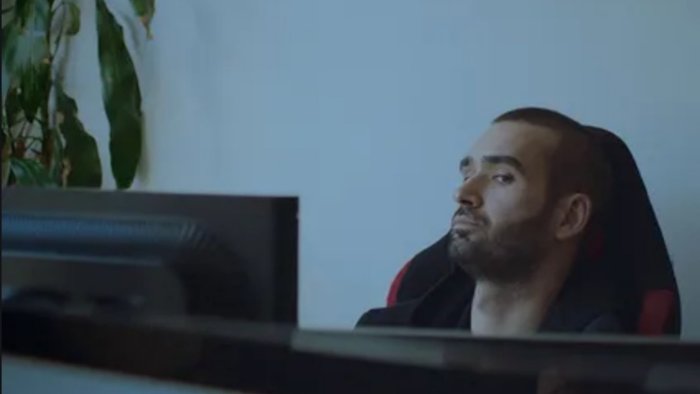
Play Schengen | Gunhild Enger | NO 2020 | 15’ | Pardi di domani, International Competition
More Info and Trailer
Norway is not in the European Union but is in the Schengen area, guaranteeing freedom of movement to citizens from many EU and continental European countries. The suggestion, given by the film’s title, that we can “play” our politics was no doubt inspired by the manipulations of the Brexit referendum – the misleading campaign that told us we could take (back) control of our borders as readily as we can take control of our gaming consoles.
The play on words draws attention to aspects of “control” of the film. One producer says that she wants to engage audiences with the refugees and the climate crisis. The company designs a Pacman style game in which players must avoid bureaucrats and collect money bags. If they find the joker visa they can even negotiate aeronautical treaties.
Scenes of musicians rehearsing the soundtrack tie the film together. The researchers speak of a Trojan horse that Silvio Berlusconi is supposed to have planted in the middle of the EU parliament as a dove escapes into the server room. The soundtrack to the gameplay accompanies the designers’ chaotic attempt to recapture the dove. It makes light of the situation, rendering reality more animated than technological interface. No one, not even the mastermind engineers, are in control of the situation.
Laura Davis
This article contains a third-party video. If you would like to watch the video, please adjust your settings.
Burnt. Land of Fire | Ben Donateo | CH-ITA 2020 | 14’ | Pardi di domani, National Competition
More Info
A whispering female voiceover laments the decay of a small rural town in Calabria. Square format front views display the empty streets at night, the elderly gathering in the village square, the dry fields under the summer heat. The only moving things seem to be the wind turbines on the hills that surround the town. All of this sounds a bit familiar, carries a sense of déjà-vu? Ben Donateo makes use of the semiotics of conventional ethnographic film to compose a formally brilliant exercice de style. The spoken discourse and the content of the images are mere tropes with which the director plays in order to create a rhythmic poem. The voice over keeps repeating the same clichés about “the good old, golden days”, while the photography does nothing but fetishize the loneliness of the landscapes. Creativity lies elsewhere, that is, in the editing. What matters are neither the words nor the images, but their succession and combination. How paradoxical it is: the repetition of commonplaces brings about originality.
Do you remember when Freud once associated uncanny effects with the “repetition of the same thing”? That might be the key to understand Burnt. Land of Fire’s fascinating power. Pseudo-ethnographical clichés are repeated over and over, so that they end up losing their self-evidence. They stop making sense and thus open up a terrifying void that one cannot fill with any kind of meaning. Repetition is the only truth. The alternation of still shots of empty landscapes and moving wind turbines becomes the last absolute certainty.
In this new audio-visual regime, you stop paying attention to what the voice says and to what the images show. You now listen to the voice as voice, and watch the images as images. Welcome to the realm of pure aesthetics. Indecipherable whispers, sounds of crickets, neon lights poorly illuminating the night, moving shapes standing out from the sunset, red surfaces on the asphalt: there is nothing more left to our perception than these. The birth of the form must be at the cost of the death of the content.
Emilien Gür
This article contains a third-party video. If you would like to watch the video, please adjust your settings.
Icemeltland Park | Liliana Colombo | IT-UK 2020 | 40’ | Pardi di domani, International Competion
This conceptual film pieces together found footage clips to create a half parody, half deadly serious ecological disaster activist film. Footage from glacier cruises around Alaska, Greenland and Antarctica are stacked together into an advertisement for a fictional amusement park. For your entertainment you can slide across a split screen to reveal – via NASA footage – changes between 1984 and 2016 to the earth’s surface caused by, for example, the creation of Denver Airport in Colorado or intensive lithium mining in Bolivia. Overlaid are sounds of gushing water and cries of panic. The audio is from clips uploaded to YouTube by tourists visiting the glaciers via boat, and onlookers in flood-prone inhabited areas becoming drenched by tsunami waves as they seek out the money shot, but we do not judge these disaster tourists here. «Please keep recording, do not evacuate the area» the text on the screen reads.
This film is one of the longer shorts in the competition and watching the icebergs crash into the ocean becomes mesmerising. While on the news we see these images so frequently, we never spend such a sustained amount of time watching and absorbing. Clapping and cheering the melting icebergs on, the onlookers experience a perverse pleasure. It is akin to a drive through a safari park: the long wait and then a pounce. At one moment I thought I saw a whale as one iceberg resurfaced from beneath the waves.
I look on Netflix, YouTube, anywhere and I see the sensationalization of disaster. Do we demand this affirmation of our mortality? Watching the crashing icebergs is like watching a living being collapse. The film is not subtle but neither is climate change. It ends with an almost too perfect music cue (that I must not spoil). I can only say – you must keep watching and not look away.
Laura Davis


